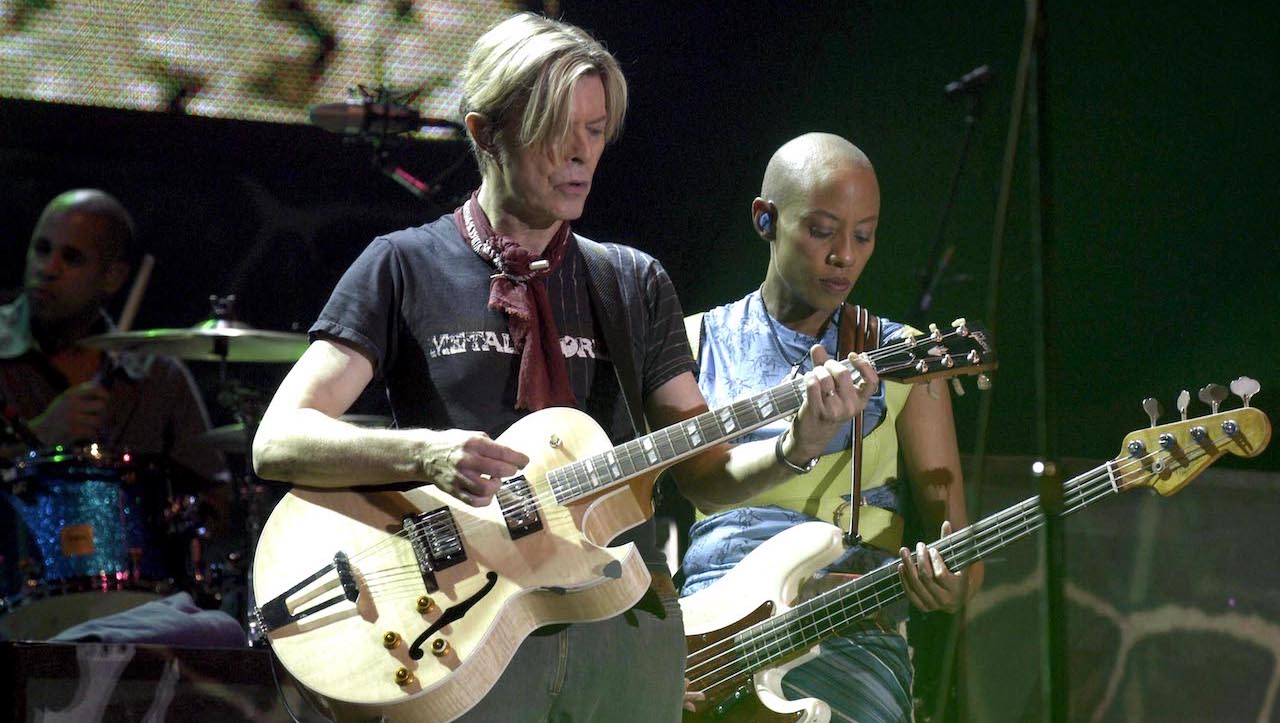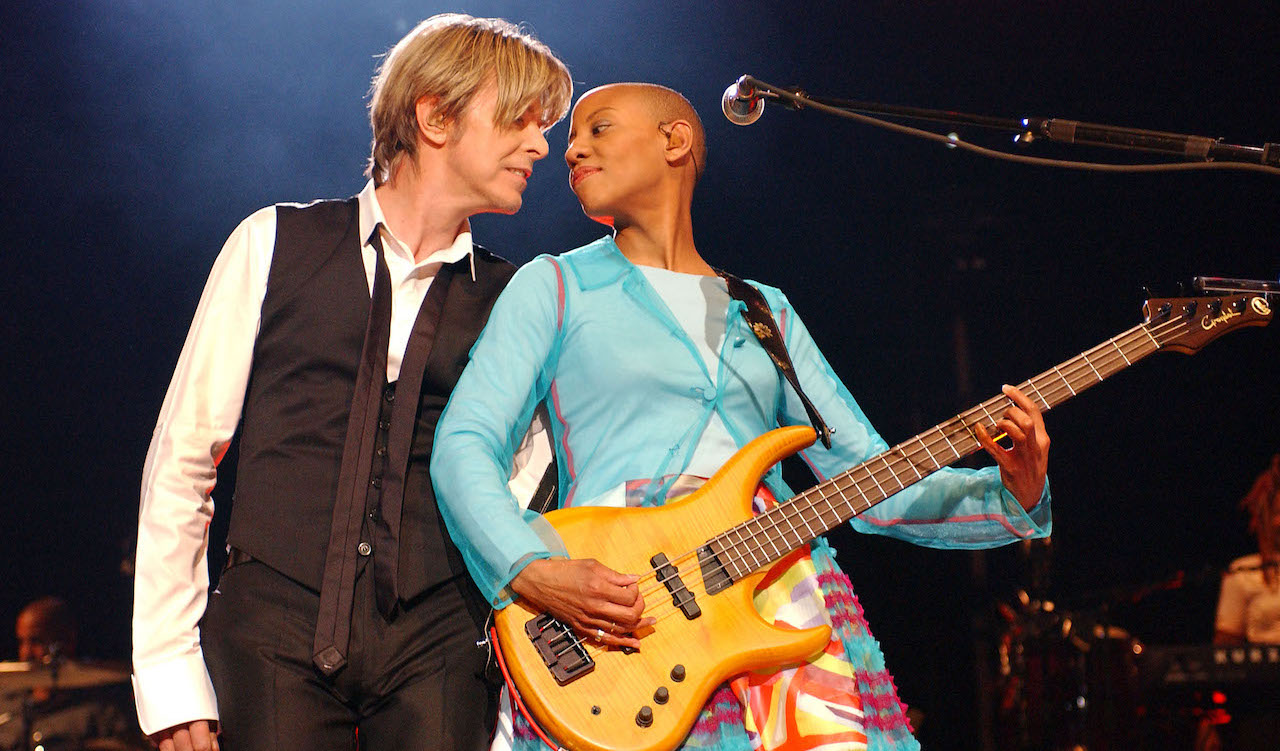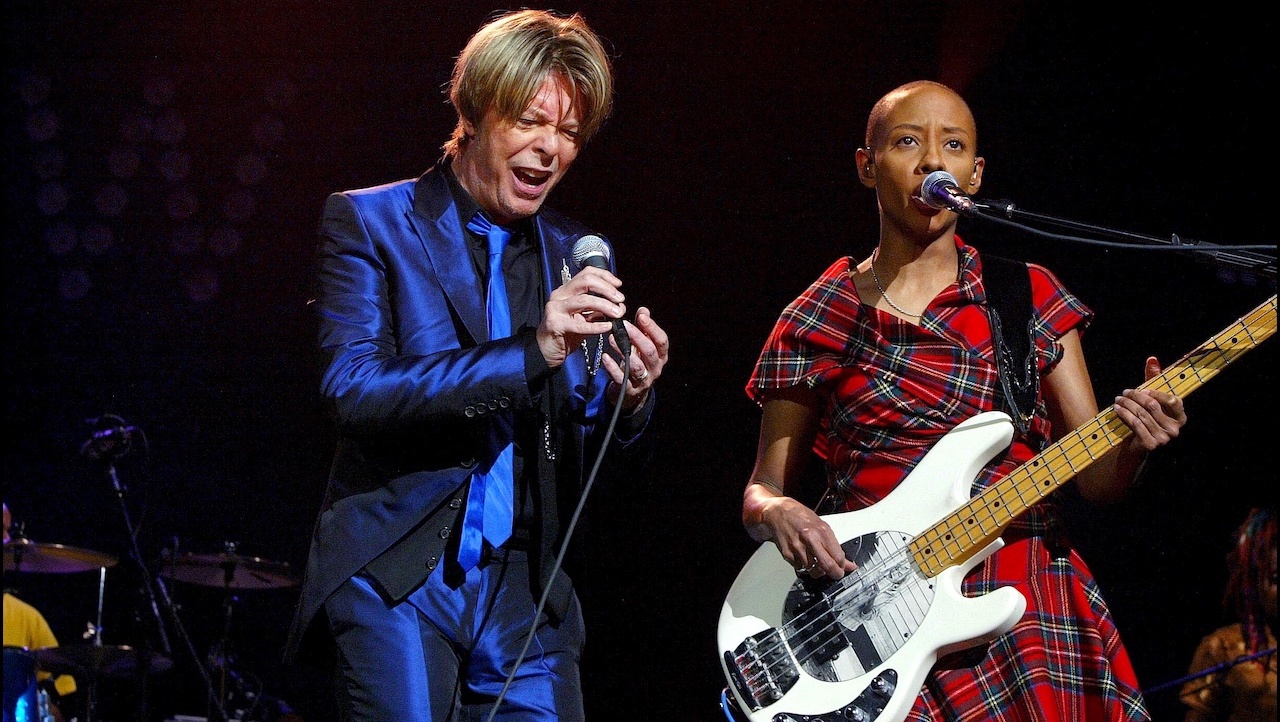Gail Ann Dorsey: “David Bowie asked me to sing Under Pressure – I was terrified!"
Gail Ann Dorsey on the genius of David Bowie, her fears following Freddie Mercury and her moment in the spotlight on Bowie's Reality Tour

Since starting out in 1970s West Philadelphia, Gail Ann Dorsey has carved an eclectic and distinguished career that’s seen her emerge as one of the most proficient and in-demand bassists on the planet. Completely self-taught, Gail’s driving ambition propelled her to the UK in the summer of 1983, where she became a notable presence on the London music scene, earning her first high-profile gig as guest vocalist in the Charlie Watts Big Band.
As her professional career took shape, Gail found herself working alongside the likes of Tears for Fears, Boy George and Concrete Blonde, before making her solo debut on cult TV weekly, The Tube, accompanying herself only on bass guitar to the Bobby Womack track, ‘Stop On By’.
In 1994, after nearly 12 years in England, Gail relocated to Woodstock in Upstate New York and the following year began her long-standing association with David Bowie. Initially recruited for Bowie’s Outside tour, a six-week union with industrial rockers Nine Inch Nails, Dorsey remained a mainstay in Bowie’s group, contributing to the Earthling, Heathen, The Next Day studio albums and featuring on 2010’s Reality Tour Live.
With Bowie, Gail had the perfect platform to showcase her bass-playing prowess, taking established lines and making them her own. “For any track, there were certain licks or hooks that you don’t want to stray too far from, but sometimes you had to do a little bit more to stretch out. If you’re recreating a live version of an original part it’s like taking your training wheels off, because when you’re practising along with the record you don’t really notice where you’re failing. You really need to just play the basic line and hold everything together."

The 2010 double live album David Bowie: A Reality Tour, was captured during the 2003 worldwide concert tour of the same name, with Gail joined onstage by the likes of Sterling Campbell on drums, Mike Garson on keyboards and guitarist Earl Slick, to perform the pick of Bowie’s back catalogue along with tracks from the Earthling, Heathen and Reality albums. “I cried the first time I heard it back,’ says Gail. ‘It sounded so good I just couldn’t believe it was us! The track that got me was ‘The Loneliest Guy’ – David’s singing was just unbelievable.
I’ve always thought David was one of the greatest singers of all time. He is up there with Sinatra or any of those guys.
"It made me realise that after all these years of playing in his band I had never really heard him sing. There are so many things going through your head when you’re onstage, whether it’s listening to the drums or just keeping my part together – whatever I need to do to have a good show – my brain’s on full drive just trying to keep up! So even though I could always hear him in my monitors and I knew when the different vocal parts were coming in, because I was trying so hard to hold down my part I could never listen in the same way the audience does. I’ve always thought he was one of the greatest singers of all time. He is up there with Sinatra or any of those guys. I just think as a vocalist he is extraordinary."
Another standout track from the Reality Tour album is an exhilarating rendition of Queen’s ‘Under Pressure’, featuring Gail on bass guitar and lead vocals. "When David asked me to sing that tune I was terrified. I mean, how was I going to play this great song and sing Freddie Mercury’s part? But I was too afraid to say no. So he gave me the version with Annie Lennox from the Freddie Mercury Tribute Concert, which the whole world had seen! And I went back to my hotel room and started learning the bass part and then the vocal."
Get The Pick Newsletter
All the latest guitar news, interviews, lessons, reviews, deals and more, direct to your inbox!
Using a Pocket Rockit headphone amp, Gail took the track down in tempo and worked on it one section at a time, gradually bringing the track back up to speed until it all locked in. "It’s a bit like a drum kit, where you have your hi-hat, kick and snare, and you have to link the whole pattern together," says Gail. "If you work on it slowly and then bring it up to speed, somehow it all fits together. It’s quite mechanical in a way. It was two weeks before I was ready to play it onstage, and we would practise it in soundcheck a little bit each day. Learning that song was one of the most challenging things I’ve ever had to do."
With David Bowie’s back catalogue containing songs of every mood, style and era, Gail had to call up a diverse range of different bass sounds. "For some of the tours we’d rehearse for five or six days a week for eight to ten weeks, and we’d be in there from nine to five, so I will spend two or three hours just trying new amps and different pedals. I’m not big on bass effects but I do love to squeeze the tone so it’s nice and round and compressed. I’m not really keen on a bright bass sound either. I play with a very soft touch, hardly hitting the strings at all, because I think you get a bigger, more old-school sound that way."

"I dig in when I have to, but a lot of times when people play hard they choke the sound. I’ve never really liked those modern basses. They’re beautifully crafted instruments but to me they’re a little too sensitive and I just don’t have the right touch. It depends on the song. Whether you play with a plectrum or not, I don’t really mind – I prefer to play with fingers but sometimes a plectrum is necessary, but I make those calls when I listen back to the original records."
Throughout her career, Gail has relied on a tried-and-tested formula of Ernie Ball Music Man basses and Ampeg amplification. "I got my first StingRay in ’84 or ’85 on the first tour I’d ever done with a band called the Thrashing Doves," says Gail. "With a StingRay I can cover just about anything."

Affectionately known as Marilyn, that same StingRay remains Gail’s favorite bass to this day and has accompanied her on tours all over the world…but why Marilyn? "I was on a train reading some magazine and there was a picture of Marilyn Monroe. She was reading a script in her trailer for the last film she ever did before she died, and she looked so perplexed, like she was never going to remember her lines; and there was just something about that picture that resonated with the way I feel when I’m trying to get something right on the bass. I could just imagine what was going through her head."
"So I ripped the picture out of the magazine and took it to a printer’s in London and had them blow it up so I could put it underneath the clear scratchplate that I’d already got for my StingRay. That picture has been there ever since, and for every tour I do I try and have Marilyn with me."
Gail is currently touring France with Matthieu Chedid in support of his latest album Rêvalité. For more info visit gailanndorsey.com

Nick Wells was the Editor of Bass Guitar magazine from 2009 to 2011, before making strides into the world of Artist Relations with Sheldon Dingwall and Dingwall Guitars. He's also the producer of bass-centric documentaries, Walking the Changes and Beneath the Bassline, as well as Production Manager and Artist Liaison for ScottsBassLessons. In his free time, you'll find him jumping around his bedroom to Kool & The Gang while hammering the life out of his P-Bass.
“I asked him to get me four bass strings because I only had a $29 guitar from Sears”: Bootsy Collins is one of the all-time bass greats, but he started out on guitar. Here’s the sole reason why he switched
“I got that bass for $50 off this coke dealer. I don’t know what Jaco did to it, but he totally messed up the insides!” How Cro-Mags’ Harley Flanagan went from buying a Jaco Pastorius bass on the street to fronting one of hardcore’s most influential bands











